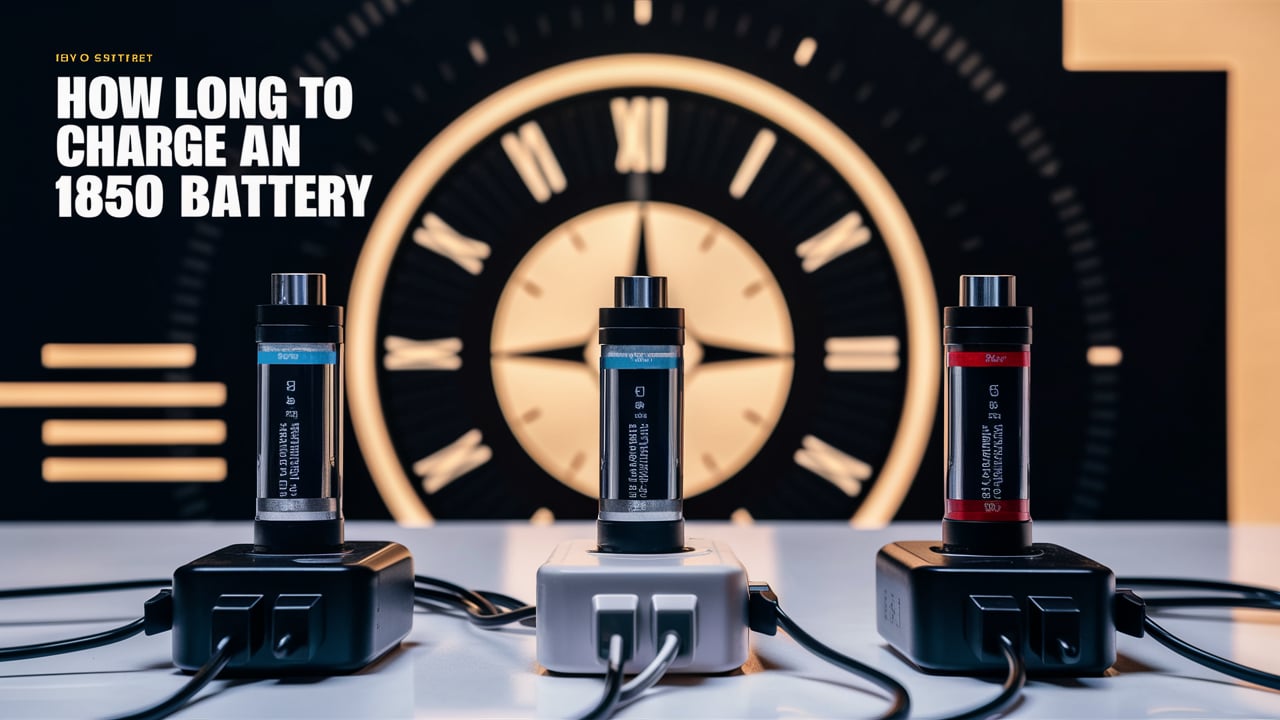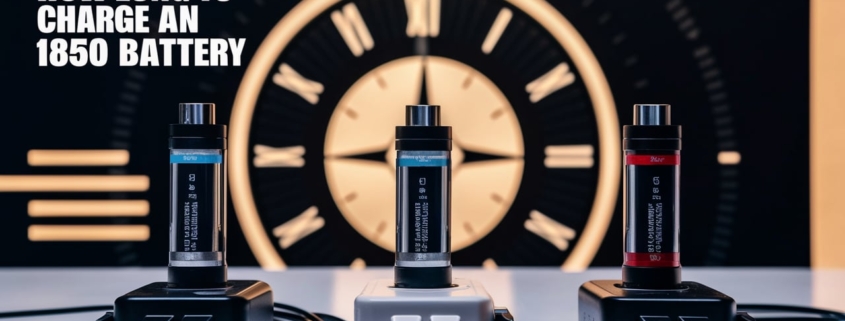How Long to Charge an 18650 Battery? The Complete Guide
Lithium-ion 18650 batteries have become an extremely popular power source for everything from flashlights and vapes to power tools and even electric vehicles. But to keep your devices running at peak performance, you need to know the basics of charging these versatile batteries.
In this comprehensive guide, as a professional 18650 battery packs manufacturer, we’ll cover everything you need to know, including:
- How long 18650 batteries take to charge
- Factors that affect 18650 charge times
- Charging tips and best practices
- How to maximize battery lifespan
So if you want to get the most out of your 18650s, read on!

How Long Does It Take to Charge 18650 Batteries?
When charging an 18650 battery for the first time, it usually takes between two and three hours to reach a full charge. The battery isn’t fully depleted at this point, since most manufacturers ship them at 30-60% charge.
For subsequent charges, total charge time depends on a few key factors:
Battery Capacity
18650 batteries are available in capacities ranging from 1,500mAh to 3,500mAh. The higher the capacity, the longer it will take to charge fully.
For example, a high capacity 3,500mAh battery may require up to 4-5 hours for a full charge. In comparison, lower capacity 2,000mAh batteries only need about 2-3 hours to charge from empty to full.
Charging Current
The amount of current (amps) supplied by your battery charger also affects charging speed. Most quality 18650 chargers supply 0.5-1 amp, which provides a balance between charge time and battery health.
Using a lower 0.5 amp charging current, you can expect a 3,400 mAh battery to take approximately:
3,400 (mAh) ÷ 500 (mA) = 6.8 hours
So in this example, it will take nearly 7 hours to fully charge the battery at 0.5 amps.
In comparison, charging at 1 amp would cut this time in half but may reduce the overall lifespan of the battery. This faster charging generates more internal heat which can degrade the battery over time.
Level of Discharge
If your battery still has 50% charge remaining, it will obviously take less time to reach 100% compared to a fully depleted battery.
Lithium-ion batteries have no “memory effect” – so there’s no need to fully discharge before each charge. Just topping off a partially charged battery is fine and reduces wear and tear.
Tips for Faster, More Efficient Charging
Here are some tips to help speed up charging times safely while preserving your expensive 18650 batteries:
- Use an external battery charger, not USB – Most USB ports supply only 0.5 amps whereas external chargers can provide 1 amp or higher per battery bay. Just remember to monitor the temperature.
- Charge at room temperature – Very hot or cold conditions will slow down charging and degrade performance over time.
- Use multiple bays if possible – Multi-bay chargers distribute charge current based on the number of batteries. So two batteries will charge faster than four.
- Purchase authentic high-drain 18650 batteries – Low quality cells have higher internal resistance meaning slower charging.
- Use the proper wall adapter – For faster charging, make sure your external charger has sufficient power input rating (amperage) from the AC adapter.
By carefully selecting quality batteries and chargers – and following best practice charging methods – you can minimize charge times safely and extend the usable lifespan of your go-to 18650 li-ion cells.
Charging Best Practices
Here are some key charging practices and safety tips for 18650 batteries:
- Don’t overcharge – Use a quality charger that stops automatically when full. Overcharging strains the battery, reduces lifespan, and poses safety risks from overheating.
- Monitor the process – Check batteries occasionally for high temperature while charging. Faulty equipment can lead to overcharging.
- Allow proper cooling – Batteries retain heat after charging stops. Let them cool off 30-60+ minutes before re-use.
- Top-up vs full cycles – Letting batteries discharge fully before recharging extends their lifespan over continual top-ups. But occasional full cycles are fine.
- Use proper storage – Keep batteries between 40-80% charge if storing over 3 months. Avoid direct heat, freezing temps, and static electricity during storage.
By incorporating these best practices, you’ll maximize the longevity of your 18650 batteries and chargers for years of reliable service.
Frequently Asked Questions
Here are answers to some common 18650 battery charging questions:
How can I tell when 18650 charging is complete?
Quality lithium battery chargers have LED indicators that change from red (charging) to green (charged). Charging is complete when the green light activates.
Can I charge 18650 batteries too fast?
Yes, excess heat from fast charging above 1C (battery capacity) degrades the batteries over time. Slow 0.5C charging better preserves longevity.
What voltage should 18650 lithium batteries be charged to?
Most 18650 battery chargers supply 4.2 volts during charging. This is the optimal voltage that balances runtime and lifespan.
Why does charging seem to take longer over time?
As batteries age and degrade internally, their capacity and ability to accept charge diminishes. So the usable lifespan is reduced over hundreds of cycles.
By taking proper care of your 18650s, you can maximize their working life. But eventually batteries need replacement to maintain optimal performance.
Conclusion
Charging 18650 lithium-ion batteries is a straightforward process – but charge duration varies based on battery capacity, charger capability, discharge level and conditions during charging.
While first-time charging may only take 2-3 hours, typical charge times range from 4-8 hours depending on the factors outlined above.
By choosing quality batteries and chargers, monitoring battery health, allowing proper cooling and avoiding damage from over-charging – you can safely minimize charge times while extending the usable lifespan of 18650 batteries.








